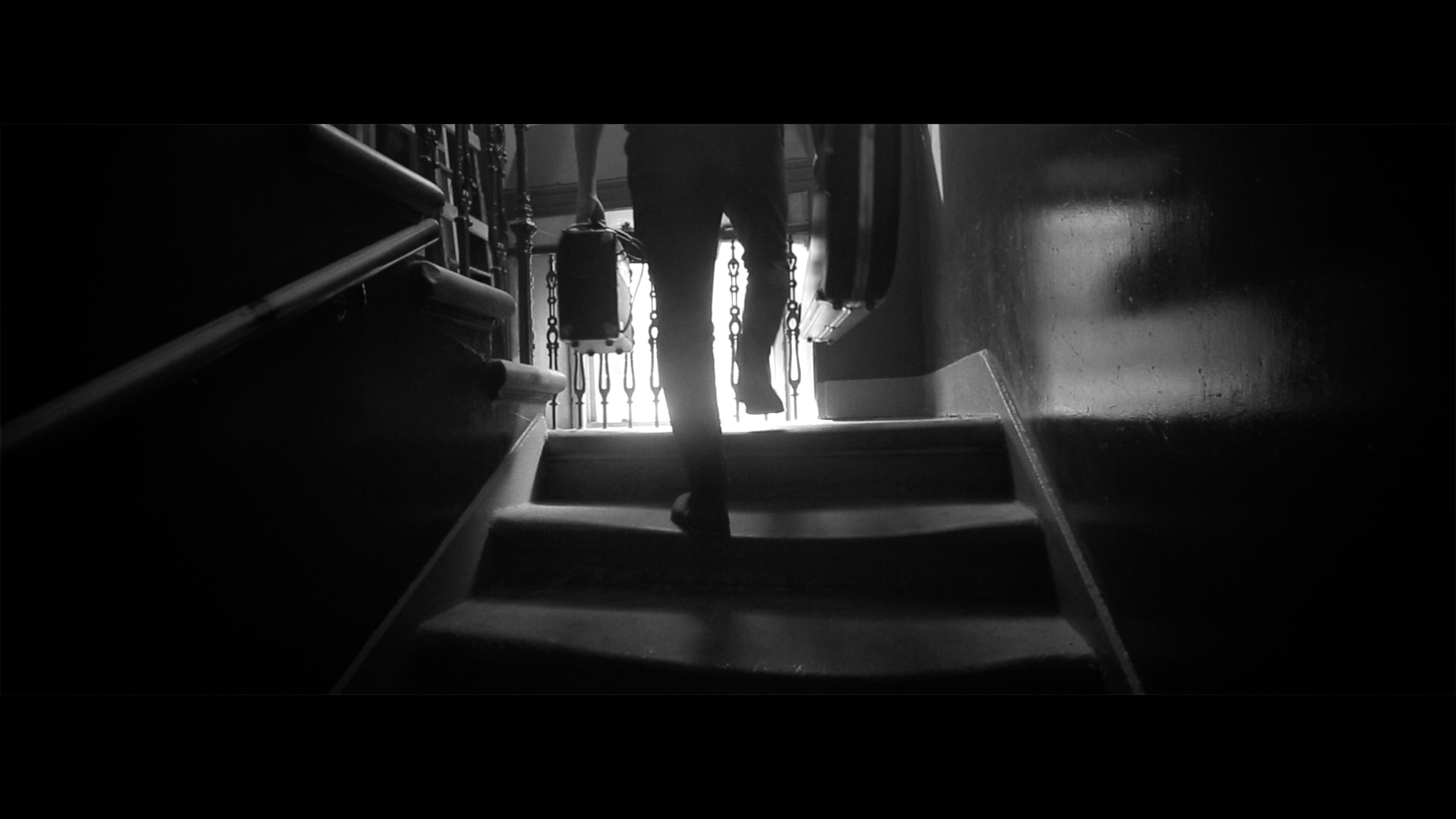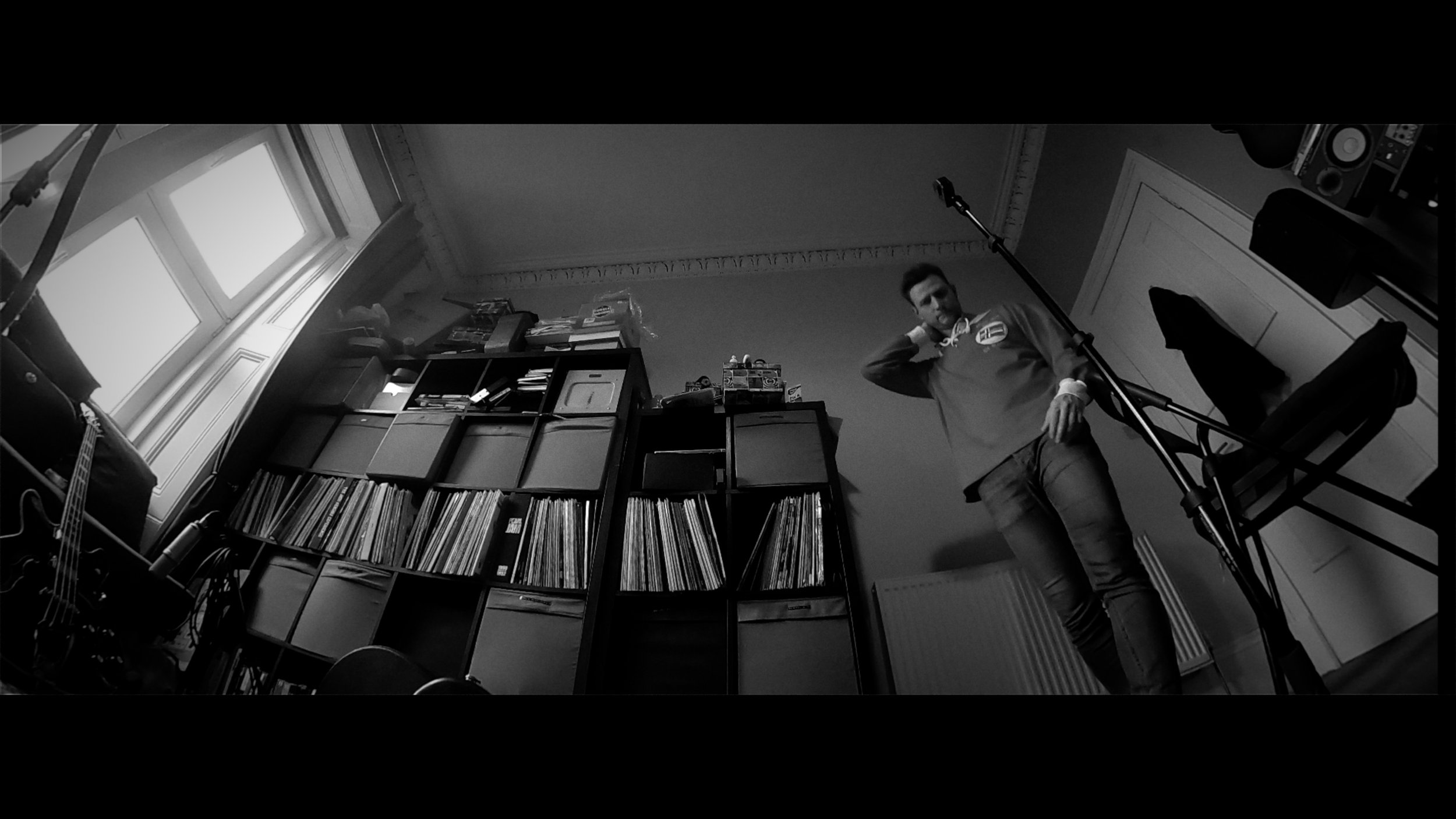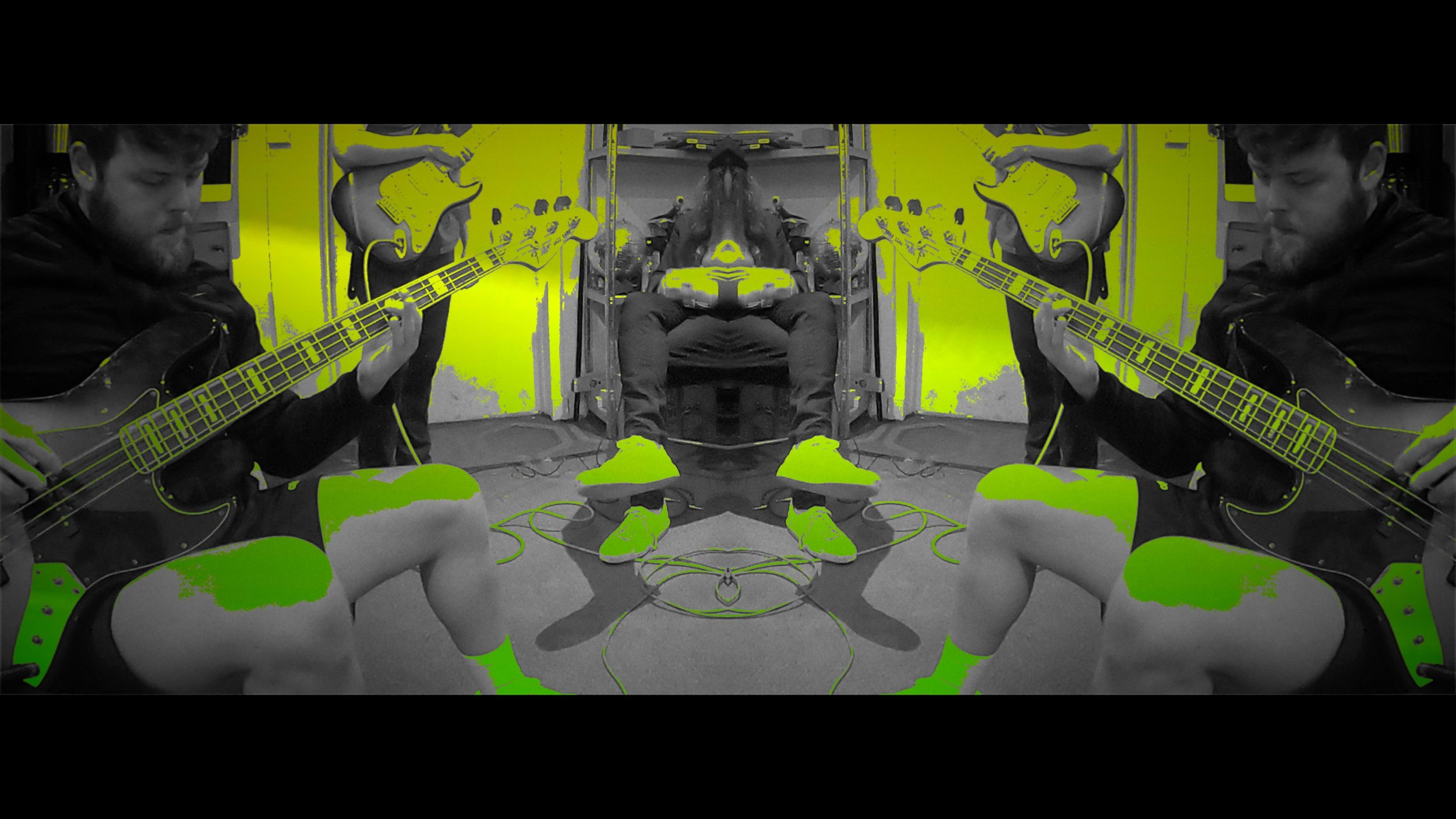Behind the Scenes: Gleði(Joy) - Mark W. Georgsson
Mark Thomson(Stage name: Mark W. Georgsson) came to me with the idea of recording a cover of a song by a band called the Jeevas. The results are here.
It was a real departure form his previous stuff. It leant much more on the heavier elements of his sound and celebrated a lot of our collective influences from the 90’s. It went so well that we continued in the same vein to record an E.P. of his songs. The first of the self-penned songs was based around a lovely riff. It suggested Smashing Pumpkins to me, and Mark already knew he wanted to go heavy on the outro, with the only stipulation that he wanted it to have a cowbell like Harry Styles.
So with that in mind, we set about creating a Harry Styles/Smashing Pumpkins mashup. First up was the bass and drum session to build a solid rhythm section. We went to Graham Hanlon’s studio in Glasgow and recorded Matthew Quigley and Michael Gahagan with Craig Shiells helping as engineer.
We had a solid grounding of bass and drums, but it was a blank canvas that me and Mark then took to Greenock to build into the track.
We took loads of time looking at what amps and effects we had and miked them up in different ways. Eventually we had the best of both world of a little dirty transistor amp with an SM57 going through an 1176 compressor and a 5w valve amp going through a valve microphone into a valve preamp, into a valve EQ into a valve compressor. We put a smattering of overdrive on the signal and then split the guitar into a stereo signal and placed one amp at each side of mark. This let mark play with an amp at each side of him. truly luscious.
Now this is starting to sound like a behind the scenes of the recording…. but I rarely get to write posts about recording cos they are less visual; plus the video became a celebration of the process. This is one of the reasons I now setup a couple of Gopros any time I record now.
So we had all this footage of a fun recording process for both the single and the EP. Mark was keen to capture the camaraderie and fun that we’d had making the recordings, so we decided to just embrace that, but unlike several other “here’s how we made it” videos, we had a big freakout section at the end.
So the plan was to film a few wee shots that gave us cinematography worthy of the opening riff. This would introduce Mark arriving in Greenock as he’d done several times and coming up the old tenement stairs.
One of the many advances of living in Greenock(Have I mentioned the dolphins?) is the old buildings. My plan was to see Mark arriving in his car and then have him take out his guitar and the Fender Squier SP10 practice amp which had become such an important part of the recordings.
We couldn't quite get the simplicity we were looking for, so it just started at the front door.
I was thinking of a ‘between the legs’ shot for this - oo-er missus. You know the classic from westerns and the like:
Cool Hand Luke - 1967 - Stuart Rosenberg
Tommy(1975) - Ken Russell
Raiders of the Lost Ark - 1981 - Steven Spielberg
I asked Mark to pause for this. It gave a moment of ponderance before the event, both for the video and the recording process - although many people do this before they climb my stairs :)
It’s not quite Battleship Potemkin or Rocky, but stairs are always a great metaphor that you can attach whatever you like to. We were more interested in the old close. Sadly, it’s very difficult to get far enough away for some grand cinematic shot, but it provided some lovely slow fades as the sun illuminated the railings.
From there, the only other shot filmed specifically for the video was my shopkeeper’s bell.
Mark has a background in carpentry. He built his own guitar from scratch with only hand tools. We had enjoyed wandering round Greenock’s west end discussing old buildings on breaks; looking at some of the stranger old buildings from the slavery, Sugar and Tobacco days.
My house came with a lovely shopkeeper’s bell, so we took a quick shot of it:
This was easier said than done, because it was 12 feet up on a high ceiling, but we got what we needed.
From there it was just a case of editing all the footage that I’d taken while we were recording. The aim was to make the edits long and relaxed and then gradually speed this up as the track progressed. this let us really rest on the relaxed camaraderie:
The footage is all shot on Gopro’s. They don’t have the majesty and the cinematography of the other shots, but they are perfect for sticking on record and leaving on. Automatic ISO and focus and batteries and memory space that last for hours. Even on their narrowest lens setting they are still pretty wide, so it gives the scene a grandiosity and gets a lot in(useful when you haven’t decided what you are filming) but it also gives a bit of distance and detachment form the musician. Even sitting on the floor at silly angles, it’s captured moments of the creative process and the mood.
So just like the track itself, we had crafted something lovely, but we had to get to the big freak out bit at the end. We knew we were going to get busy and colourful by the end. Mark had the idea to gradually introduce colour. We’d highlight one bit of colour in each shot until the big pause and then go full tonto. This effect is sometimes called the “Sin City” or the “The Schindler’s List” effect:
Ours was slightly less harrowing:
This gave us a rolling progression into the big ending. I started to make the edits faster and less regimented and we started to include footage of the wider recording process rather than shots of actual takes. This let us include people who had played on the other tracks of the EP like Robbie Noble and John McArthur. As this section progressed, I added a few other effects and time blurs to show the edges of reality start to fray before the psychedelic bit.
Then it all stops….. Sometimes the editing drive to fill all the space in a music video is such that I forget that I can just cut to nothing.
From that point on it just goes wild. The unedited version has 2 minutes of escalating noise. We had so much fun making it, and I think the whole section is a good representation of the creative freedom we afforded ourselves while making it.
There’s a few Easter eggs that only Mark, Michael and myself know about, but apart from that it’s some pretty cheap tricks and mirroring and layering to give it the feeling that it had been edited on rudimentary VHS systems in the 80’s:
As with most of my videos, there was an initial edit that was made with “found footage” from YouTube. Annoyingly, some of the classic swirls and optical illusions were very difficult to find in a (definite) copyright free form. I had to look into generating them in a way that was effective and also not time consuming. So what seems to be quite simple came with a few cul-de-sac’s on the way.
Once it was all cut and we were happy with it, we knew that we wanted to make it quite a sparse grainy black and white tone to start with. Now people think that you just take down he saturation, but the “colour” grading for black and white can be a lot of fun. I always think of Raging Bull(1980):
It’s got this quality that you only get with analogue film. It’s what I’m trying to achieve when I’m using Ilford HP5 or Kodak 400TX film when I’m doing analogue photography.
And so….. the final cut:
We are all over the moon with the results. It was lovely showing off my recording work in a music video. The bulk of the video was already made from the stuff that we had filmed for social media. This meant that the actual filming for the video accounted for less than 20 seconds, so we could really take time to perfect it.
As always, if you like this and you want to see us do more. Like, Share, comment and interact

























